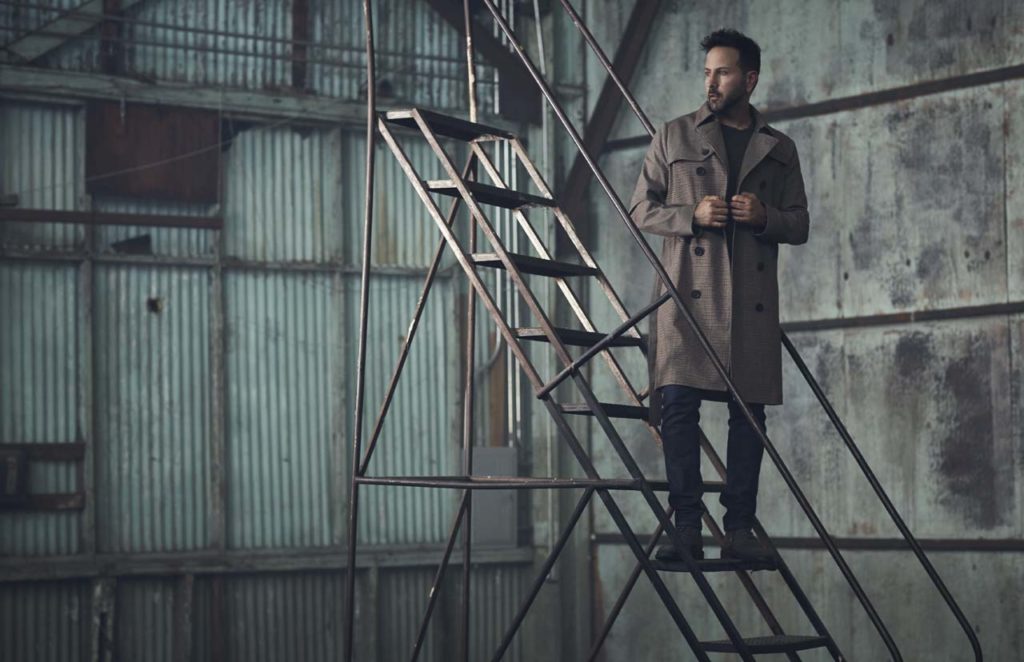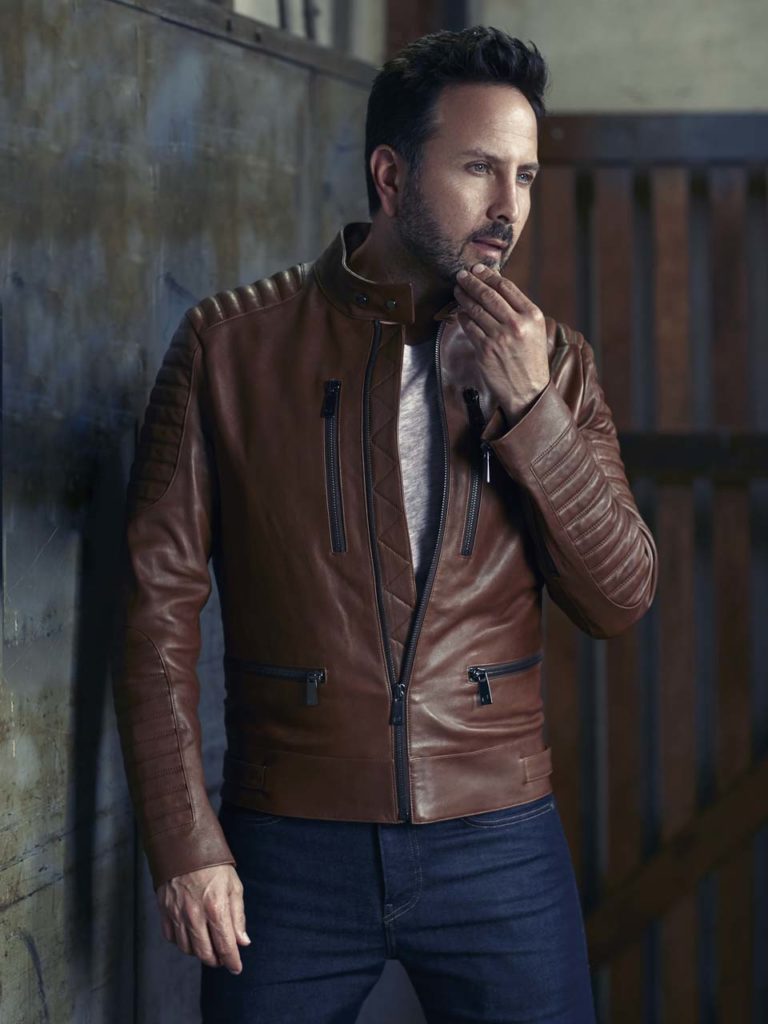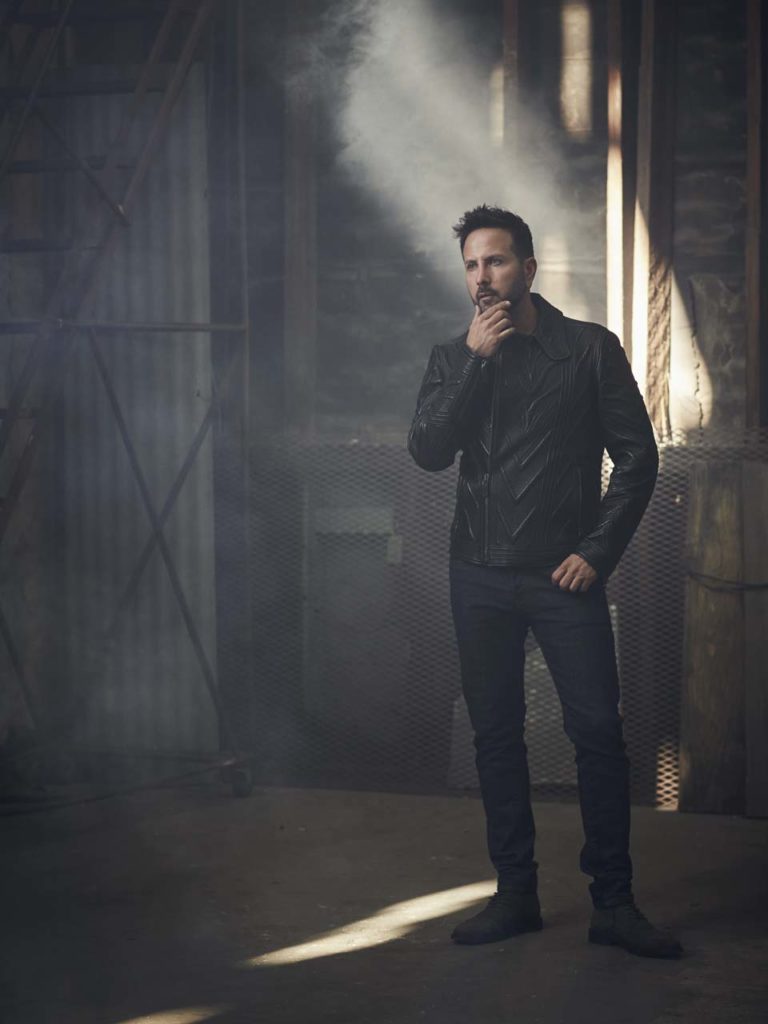A born-and-bred Jersey boy spins celebrity photo shoots and pr business fame into philanthropy
by James Tate • Styling by Claudia Perez-Kowalski • Photo Producer: Justin Miller
I‘m not a fashion photographer,” said John Russo. “I shoot in a fashionable way, but I’m not a fashion photographer.” Speaking from his Los Angeles home (though he has a second residence in nearby Montecito), Russo then refers to his decision to move west after a childhood spent in New Jersey. It’s a striking memory, given his station at the moment. He has, for more than twenty years, been one of the world’s top celebrity photographers, has shot for Vogue, Vanity Fair, Elle and Harper’s Bazaar, and campaigns for Dolce & Gabbana, L’Oréal, Hugo Boss, and Gucci, among other brands. But, he insists, “I’m a celebrity photographer…who likes to shoot fashion.”

If you’ve glanced at a newsstand in the 21st century, chances are you’re familiar with Russo’s work. From portraits in national magazines to documenting the fashion industry’s leading names, he has captured just about every A-list celebrity working today, using a style he traces back to early admiration of famed photographers Herb Ritts, Bruce Weber, and Greg Gorman.
“I had a huge poster of Weber’s work hanging over my bed through high school,” Russo said, “I knew even then that I wanted to be a photographer, but just didn’t know how I was going to get where I wanted to go.”
His earliest photos were taken on a Kodak disc camera while in school in Ventnor City in Atlantic County, later on a Canon AE-1 given to him by his father.
“After high school I remember sending away for an informational packet from The Brooks Institute in Santa Barbara, which at the time was the top photo school in the world,” Russo recalled. “It was extremely expensive and my parents had four kids, so I didn’t expect them to pay for it. I got over the notion of going there, and found the photo program at the Richard Stockton College of New Jersey.”

At Stockton, Russo explained, “I would find the most beautiful people and photograph them, and everybody would come to my critiques because they wanted to see the hottest people in the school. That was a simple strategy, and it worked out well [laughs]. I just kept pushing…shooting beautiful people, and through that I developed my own style—but I definitely took points from the masters.”
Leaving the East Coast for Los Angeles was a simple choice. “My way was LA,” he said. “New York wasn’t for me because if I wanted to shoot celebrities and gain that level of success and fame through my work, I needed to be in LA.
From day one I put on blinders and said, ‘There’s no Plan B.’ Going back to Jersey was never in the cards.” The success that followed was, Russo explained, “such a gradual progression that there wasn’t really one break. You get a job, then you get another, then another. Shooting Gwyneth Paltrow for Vogue (see photo at left) was a good one, but there wasn’t a single moment that defined ‘my break.’ It’s just constantly working my ass off and not taking no for an answer.”
Asked how success altitude is maintained once achieved, the answer was simple.
“Really I’m only in competition with myself,” Russo said. “You have to stay relevant, you have to stay fresh. People are hiring me for my style, for how I shoot, for my personality, so I don’t really focus on what [other photographers] are doing.” Today, Russo’s shoots are produced through his own company, “where I have an amazing team that works with me. They are continually helping develop ideas and concepts…pushing the boundaries with lighting and technique, fashion, and location. There are so many younger people coming up behind me who are photographers, but I focus on what I’m doing and how I can be the best in my field.”

That field is ever-expanding. Given his breakneck array of pursuits outside of the photography business, it’s a wonder to hear the artist speak so calmly about his life and schedule. For starters, in 2013, he launched a public relations firm that now represents elite hotels, resorts, and other brands.
“As a photographer, even now, I essentially do a publicist’s job…in
that I find assignments for publicists. It got to a point where I asked myself ‘Why am I doing this?’—and then I thought that I’ll start my own firm. I knew how to do this, so I did.” Four years later, that firm, BMP Beverly Hills, counts among its clients The Mandarin Oriental Hyde Park hotel in London, the Carneros Resort & Spa in Napa Valley, The London West Hollywood, and the Hotel del Coronado near San Diego.
“Right now that’s our roster,” said Russo, “but we have a lot of clients who aren’t necessarily people you’d know of.”
There is also a beauty line in the roster—John Russo Beauty—that
includes cosmetics and fragrances, and while it’s sold in stores and in hotels such as the Four Seasons and Montage, “it’s more of a giveaway, to be honest,” he said. “We give it away to charity.”

At the word charity, Russo lights up. His second book, 100 Making A Difference, profiles world philanthropists using portraits by Russo. His first book, About Face, (Pixie Press Worldwide) featuring Polaroids of actors and models, was published in 2009.
“It’s absolutely amazing,” Russo said of the new volume. “The people we have in the book are the top philanthropists in the world— Elton John, Maria Shriver, Malala Yousafzai [a Pakistani activist for female education and the youngest- ever Nobel Prize laureate]… icons in philanthropy and activism.
I wanted to do a book that highlighted one hundred very different people.” The book will be published in February of next year, but Russo is already in discussion with Irena Medavoy [wife of producer/director Mike Medavoy] to adapt the project into a documentary series. “The show would be an extension of the book. It’s early, but it’s working.”
Russo’s own charitable work has grown to be a source of additional happiness.
“I’m so happy about everything I’m doing. I’m very grateful and satisfied with where I am in my life,” he said. “I could not be any happier right now…continuing to grow in my craft and creating more opportunities to help other people— through charity books, through a TV show, through any way that I can. I’m fortunate enough to have a certain level of success, and feel that I have to share. When I go to speak at detention centers with troubled youth about being a photographer and how critical good life choices are…I don’t get paid to do any of that, but I do get paid, really, because it feels amazing. It’s like, ‘Where was this speaker when I was a kid, when I needed someone to come to my school?’ Nobody was there. It’s not that I have to this, it’s that I want to. Name me a better feeling.



